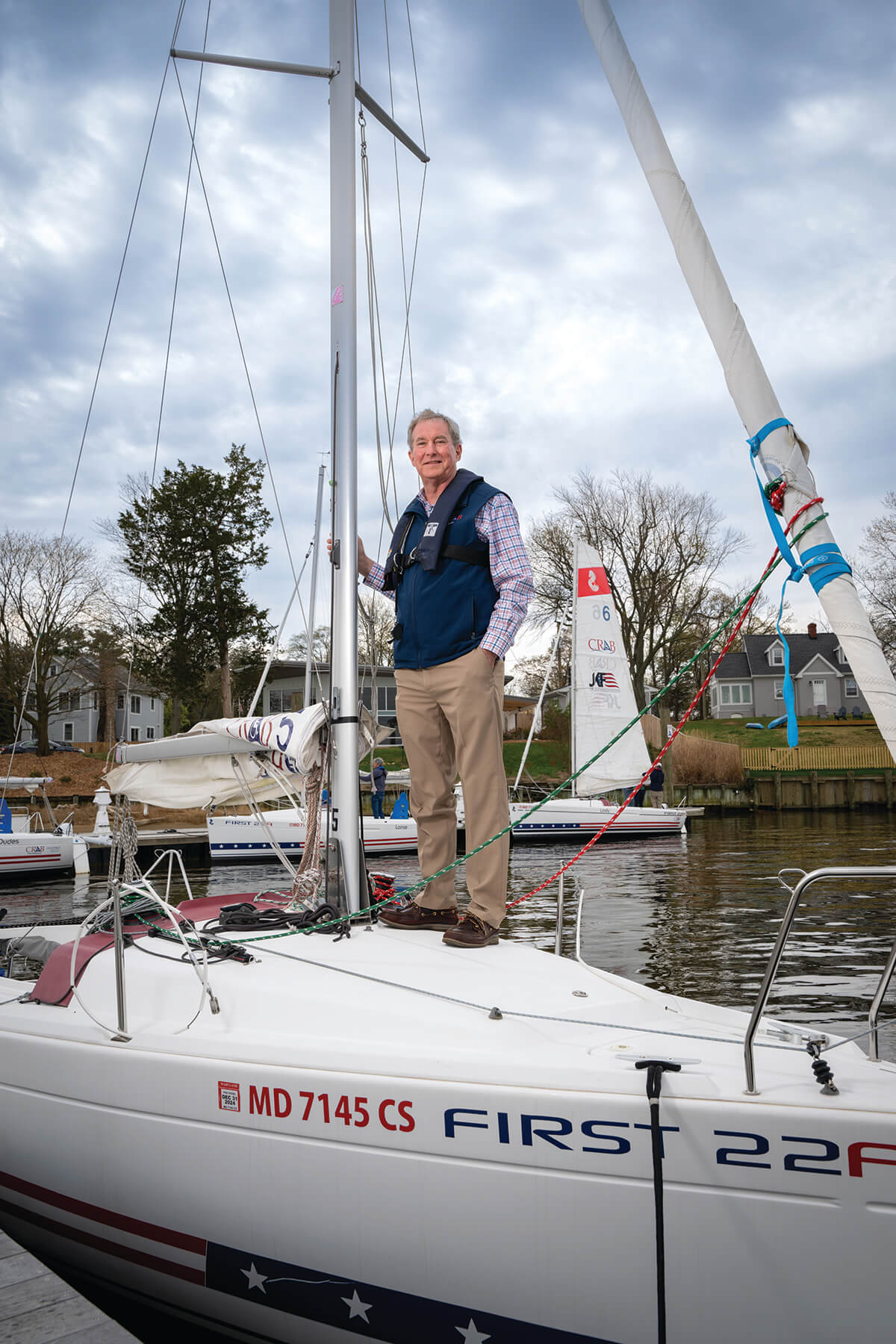GameChangers
Paul Bollinger Helps Individuals With Disabilities Experience the Joy of Sailing
The president and CEO of Chesapeake Region Accessible Boating—a lifelong boater who founded the Wounded Warrior Sailing Regatta in Annapolis—discusses the organization's work.

Chesapeake Region Accessible Boating (CRAB) was founded 33 years ago on the belief that people with disabilities should have equitable access to meaningful and therapeutic recreation. Last year, the nonprofit adaptive sailing organization opened a state-of-the-art, $6.3 million open-air pavilion and 2,600-square-foot learning center in Annapolis.
Founded by Annapolis local Don Backe after a car accident left him paralyzed, CRAB has enabled thousands of individuals with disabilities to experience the joy of sailing. Today, life-long boater Paul “Bo” Bollinger, who founded the Wounded Warrior Sailing Regatta in Annapolis a dozen years ago, leads the organization. He talks about it below.
Let’s start with the incredible, and beautiful, new facility in Annapolis. It is quite a change from the old location at Sandy Point State Park.
That’s the one big comment we have received from guests—that the facility is beautiful. We designed it that way with intention. It is just a fact that most of the people with disabilities are used to secondhand or hand-me-down type of equipment and facilities. When they come here, things are different. The people who run the Challenged Sailors San Diego program came and said it was like coming to Oz
How long did it take to raise the money and put the financial deal for the land and construction together?
Waterfront property in Annapolis is not cheap real estate. The CRAB board made the decision to start looking for a new facility when we went from four boats to six in 2017. We had filled the floating dock at Sandy Point State Park. We hoped to be in Annapolis, although we looked throughout Anne Arundel County. Finally, we found a property and marina that the owners were interested in selling, and then we worked with them over many lemonades shared on the front porch, talking with them about our plans and the process that we had to go through to acquire the property.
One thing that happened was that we were able to get County Executive Steuart Pittman to agree to use Program Open Space funds to acquire the property. The city of Annapolis came in with $500,000 and we received a capital improvement project grant from [then] Gov. Hogan. We were able to put together the remaining piece of the $2.25 million acquisition price. The owner never believed I would be successful. Never.
And how important was it to be in Annapolis?
It is a very nice area to sail here, of course. We’re predominantly in the Severn River. But we can go out to the Bay and we participate in the annual CRAB Cup, which goes all the way across the Bay and up to the Bay Bridge before it comes back to the starting line. If the winds are very high, we can sail in Back Creek. There are a lot of our volunteers who live in the area, too—although we do draw volunteers from as far away as Delaware. We also have a D.C. contingent of skippers and volunteers from all over Maryland. And then we also have the guests with disabilities—about 80 percent are probably Marylanders—but we draw from Virginia, Pennsylvania, New Jersey, and Delaware, all over the region.
The Beneteau boats in your fleet are remarkable. Custom-made, so that guests can be involved in the actual sailing, correct?
They’ve been custom-modified for our guests who need to be assisted in getting into the boat. They also have racing-car bucket seats in them with four-point harness belts and the main sheet has been moved out of the cockpit, which creates space for two chairs.
This is an active sailing program for the guests, correct?
Yes, we don’t take guests for rides. Sometimes it takes a little coaxing, but we’re like, “You’re going to sail this boat. We’re going to put your hand on the tiller.” The boat seats are arranged so that if a person’s strong hand is their right or if it’s their left, we can seat them so that they can put it on the tiller and control the sailing of the boat. If there are other guests onboard, then they would control the jib sheet.
It must be a tremendous feeling to be on the water for people who use a wheelchair. Many, I assume, have never sailed previously.
There’s one story that almost brings tears to my eyes every time I share it. I was in the office working, and one of our young skippers—and we don’t have a lot of young ones, we’re always looking for those—calls me. He says, “Hey, I wanted to let you know that I just took a young guy out sailing.” And he says they were sailing near the Bay Bridge when our guest with disabilities turned and looked at him and said, “I want you to know that I really appreciate you taking me the farthest I have ever been from my wheelchair and the memories that put me in it.”